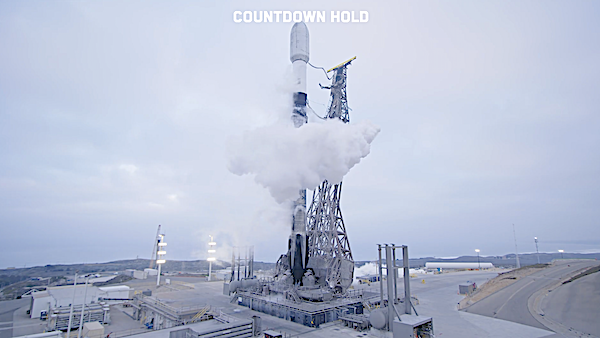
SpaceX is targeting Tuesday, January 21 for a Falcon 9 launch of 27 Starlink satellites to low-Earth orbit from Space Launch Complex 4 East (SLC-4E) at Vandenberg Space Force Base in California. Liftoff is targeted for 7:24 a.m. PT, with opportunities available until 9:55 a.m. PT. If needed, additional launch opportunities are also available Wednesday, January 22 starting at 6:28 a.m. PT.
The forecast calls for a temperature of 50°F, clear skies, 2% cloud cover and a wind speed of 5mph.
A live webcast of this mission will begin about five minutes prior to liftoff, which you can watch here and on X @SpaceX. You can also watch the webcast on the new X TV app.
This is the 10th flight for the first stage booster supporting this mission, which previously launched Oneweb 4, USSF-62, and seven Starlink missions. Following stage separation, the first stage will land on the Of Course I Still Love You droneship, which will be stationed in the Pacific Ocean.
There is the possibility that residents of and visitors to Santa Barbara, San Luis Obispo, and Ventura counties may hear one or more sonic booms during the launch, but what residents experience will depend on weather and other conditions.
SpaceX’s Starlink Group 11-8 smallsat launch aborted 11 seconds before launch

After a SpaceX starlink abort as the countdown reached 11 seconds. The abort was called after a plane flew into SpaceX’s no fly zone. SpaceX is now targeting Monday, January 20 for a Falcon 9 launch of 27 Starlink satellites, a new record for this type of satellite, to low-Earth orbit from Space Launch Complex 4 East (SLC-4E) at Vandenberg Space Force Base in California. Liftoff is targeted for 7:13 a.m. PT, with backup opportunities available until 11:13 a.m. PT. If needed, additional launch opportunities are also available Tuesday, January 21 starting at 6:51 a.m. PT.
SpaceX said that its newest version of the V2 Mini are 22 percent lighter than the original V2 Mini.
“These satellites have a new backhaul antenna powered by a SpaceX-designed and built dual band chip, called Doppio,” SpaceX wrote. “The satellites have upgraded avionics, propulsion, and power systems and are optimized for Falcon 9 to allow up to 29 satellites to launch on each mission — six more satellites per launch than the original V2 Mini design.”
A live webcast of this mission will begin about five minutes prior to liftoff, which you can watch here and on X @SpaceX. You can also watch the webcast on the new X TV app.
This is the 10th flight for the first stage booster supporting this mission, which previously launched Oneweb 4, USSF-62, and seven Starlink missions. Following stage separation, the first stage will land on the Of Course I Still Love You droneship, which will be stationed in the Pacific Ocean.
There is the possibility that residents of and visitors to Santa Barbara, San Luis Obispo, and Ventura counties may hear one or more sonic booms during the launch, but what residents experience will depend on weather and other conditions.
